Simplicity. A word that can seem the enemy of a lot of guitarists out there who are eager to show off their skills. Roaming from one end of the fretboard to the other in an attempt to create the most impressive music, they might even scoff at the idea of playing simple chord progressions!
You’d be amazed, though, at how many monumental songs are made with simple chord progressions. Many of these songs even have identical progressions. It begs the question, then, what are the main chords on guitar?
The three main chords on the guitar are the C Major, F Major, and G Major Chord, which is also called the I-IV-V progression. This is probably the most used progression of the last 100 years. You could also replace the G Major with a G7.
As you make progress on your beginner guitar journey, it’s important to understand the utility of these chords, how versatile they are, and just how you can use them to amplify your songwriting. In this article, we’ll dive into just that.
The 3 Main Chords to Learn on the Guitar
Based on the most popular chord progression, in the most predominant key, the 3 main chords make up what’s called an I-IV-V chord progression. Of course, what the three “main chords” are on the guitar is open to debate, but I think a lot of people would agree.
I’ll include some other chord progressions below that’ll give you an idea of what kind of chords you should learn when first starting out. Moreover, the brother article to this piece, the 12 Main Chords of the Guitar, really looks at this in detail. But I digress.
Let’s look at the three most commonly used chords by guitarists everywhere, whether they’re just starting out or they’ve been playing for years (although, the I-IV-V is kind of cheesy at this point in my opinion).
1) C Major Chord
6 Triads and 6 Voicings of C Major on Guitar
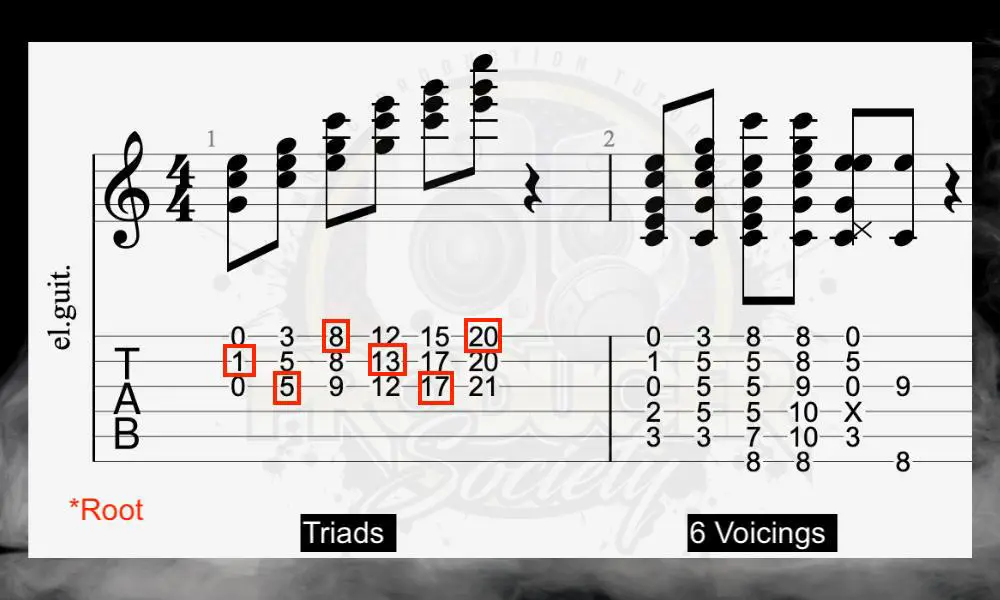
How to Play the Standard C Major on Guitar
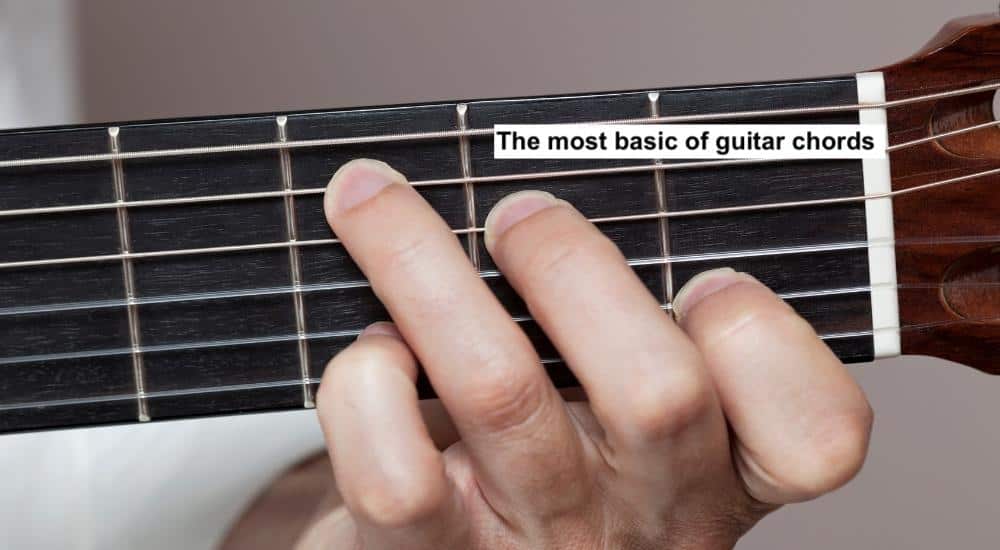
Chord Diagram for C Major on the Guitar
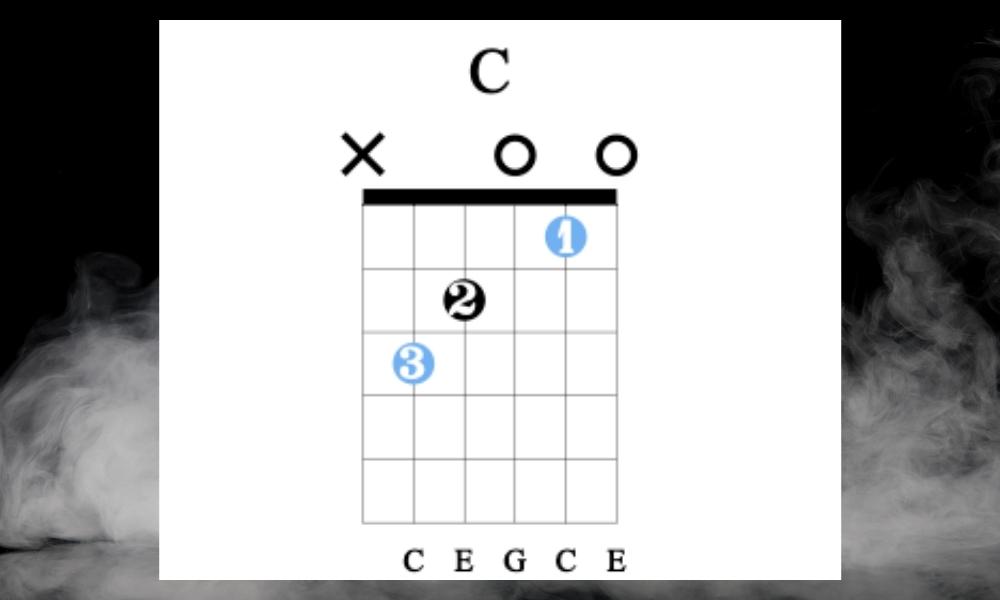
A fair case can be made that the C Major chord (C, E, and G) is the most popular and important chord in Western music. Not only is it the first chord and scale that most piano players will learn, but it is also the root of many songs, both new and old.
In my article on the twelve main chords on the guitar, I explained why C Major became popular itself as a chord. Now, we provide insight as to why C Major works well in the context of the I-IV-V chord progression (the most popular progression in Western Music).
In the I-IV-V progression in the key of C Major, C is the first chord. This is known as the tonic. Regardless of which scale you’ve chosen, the tonic is how we refer to the first note of that scale.
The tonic is also known as the “home” of the scale, and it’s important to mention. Here’s why.
I’ve referenced studies previously, like this study in the Journal of The Acoustical Society of America, which suggests that music-processing ability may be innately found in infants.
This goes some way towards explaining an interesting phenomenon I’ll call “craving the tonic.” What I mean, is that most musicians will be familiar with that feeling when playing a chord progression, or even a scale, where it feels like it hasn’t quite “ended” yet.
In a progression, in a song, we feel that the song has ended when we’ve heard the tonic. When we’ve ended on the starting note (many exceptions to this in music though, particularly in jazz).
In other words, an unresolved chord progression or scale which does not return home to the tonic leaves us subconsciously yearning for that resolution. Try it for yourself.
Play just seven notes of the C Major scale, or just the C and F in the progression C, F, G and see how you feel. Take a look at the video demonstration below to see what I mean:
As I’ve mentioned, any chord can be the tonic but we’re just using C Major as an example due to the fact it’s used as a frame of reference for the rest of Western music theory.
By the way, Punkademic’s Music Theory Comprehensive Complete Course is where you can learn all of this stuff. Get it with their All-Access Pass and use the coupon code “producersociety” if you want to save a bit of money.
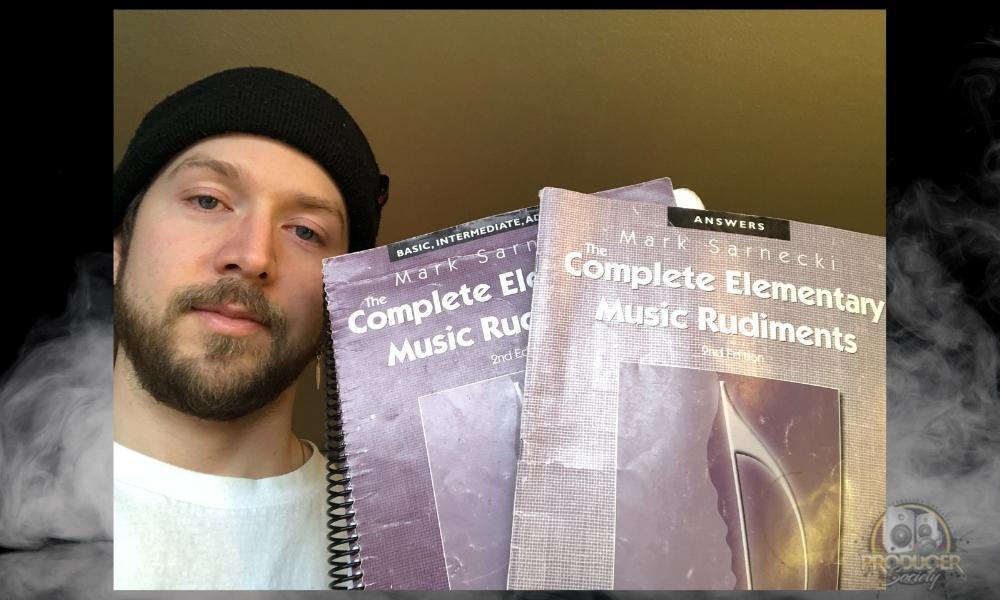
Now, here’s why the other two chords in this progression make for an intuitively enjoyable progression.
2) F Major Chord
6 Triads and 6 Voicings of F Major on Guitar
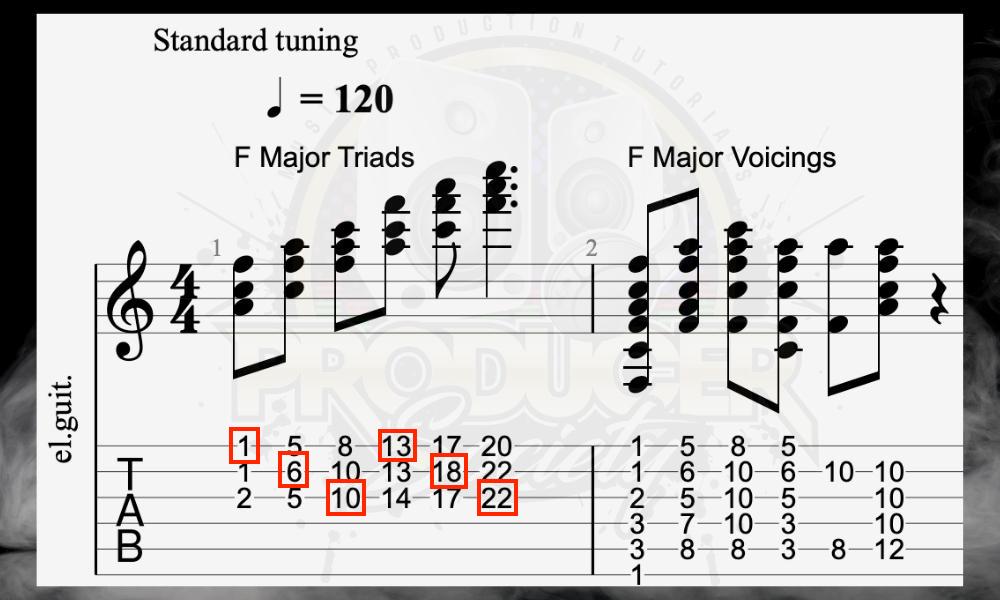
How to Play the Standard F Major on Guitar
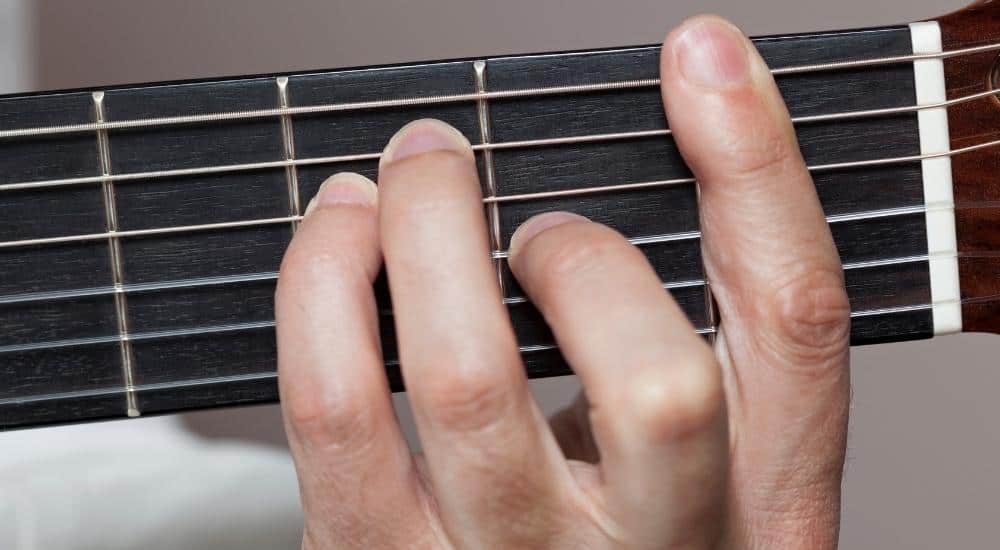
Chord Diagram for F Major on Guitar
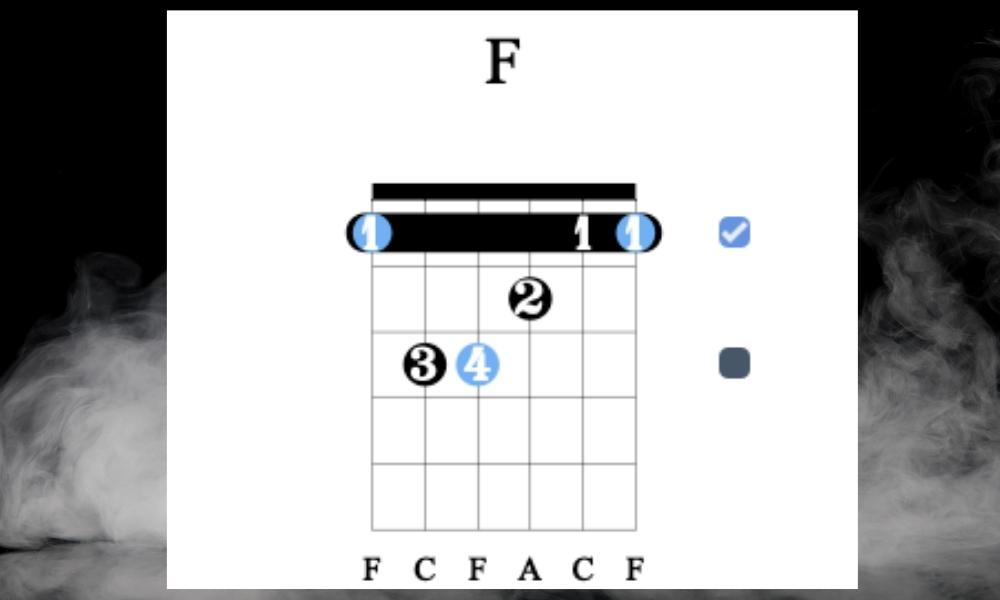
F major (F, A, and C) in the context of the C Major scale, is known as the subdominant. Every fourth note of every scale is subdominant, in music theory.
If we’re talking about the major scale anyway. It changes if you’re using Harmonic Minor or Melodic Minor, but that’s for another day.
In Schenkerian Analysis (dubbed after music theorist Heinrich Schenker – read his analysis here), the subdominant provides movement away from home, while simultaneously directing the dominant chord back in the same direction.
That’s a complicated way of saying that the IV chord in this progression, is what anchors the V chord back to the I chord. If not for the IV chord, the V chord would not necessarily require that movement back to the I chord.
The IV chord also has the 4th degree of the scale in it, which is a perfect 4th up from C. This is an interval that will also require some resolution. Although, you can hang out on it for a while to build tension, but there is a feeling that it must either go up or down.
3) G Major (or G7)
6 Triads and 6 Voicings for G Major on Guitar
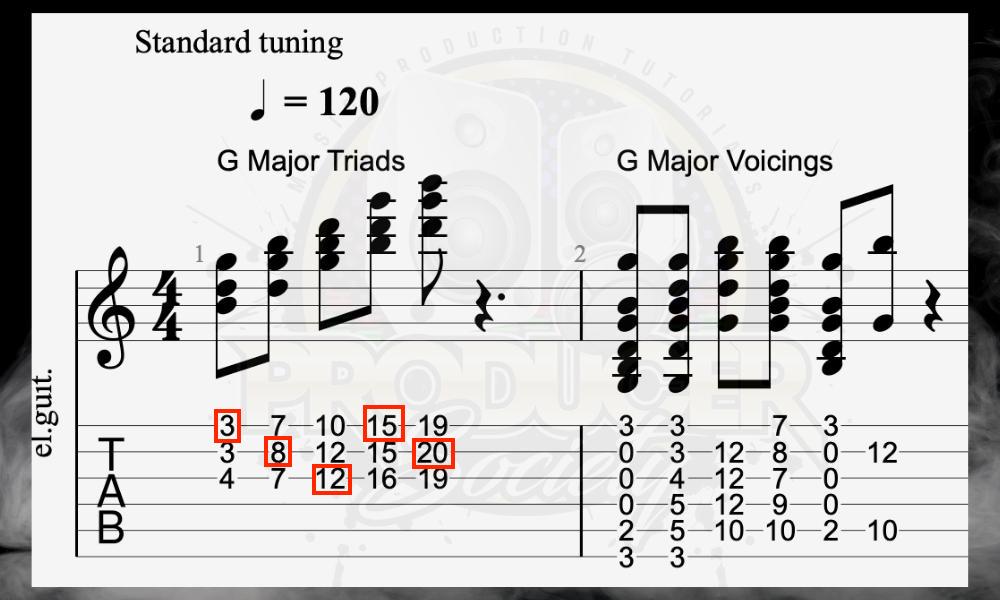
How to Play the Standard G Major on Guitar
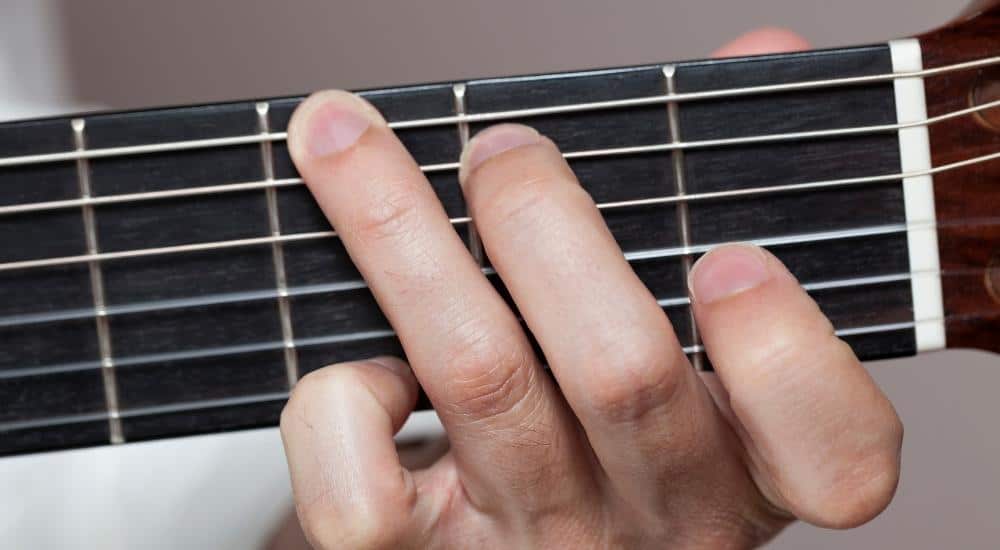
Chord Diagram for G Major on Guitar
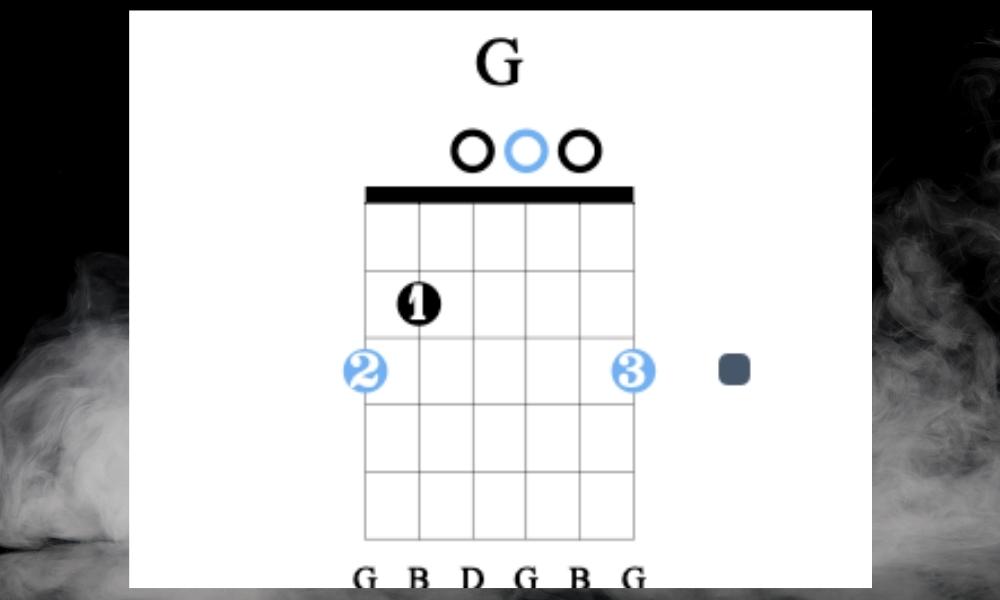
The dominant of the I-IV-V progression in C Major is the G Major chord. This is often alternatively replaced with the dominant 7th chord, G7.
Now, played in the context of the C Major and F Major, playing the G major will create enough tension and suspense for us to crave that resolution back to the C Major chord.
What makes the I-IV-V progression so complete, is that the three chords which make up this progression, contain all of the notes in the C Major scale. From a melodic perspective, this gives you the flexibility to create any possible melody in the scale, without requiring any other chord.
An interesting insight that explains the prevailing popularity of the major key I-IV-V is regarding the key in which most songs were written. According to this HuffPost article, most pop songs were written in major keys before the 1960s.
Nowadays, we see a shift towards more minor keys, according to the analysis in that article. So who knows, perhaps the most popular chord progression will be different in a century from now? For instance, Rick Beato says I – IV – V – vi is a really popular one.
From what I’ve seen, I’d say this is definitely the case. One song that comes to mind is “rockstar” from 21 Savage and Post Malone. That track was huge when it came out and it’s as minor as ever. It’s in G Minor, as a matter of fact.
Perhaps a more modern example – (“rockstar” is a few years old now) – is “Oh My God” from Adele which is in the key of Bb Minor. It just came out in 2022.
Other Theories On What The 3 Main Chords Are
Of course, there are definitely other ideas on what the 3 main chords are on the guitar. For instance, this article from the Art of Manliness says the three main chords are C Major, D Major, and G Major. And that brings me to my next point.
1) I – II – V (C Major, D Major, G Major)
Frankly, we’ve already done enough explaining what the deal is with some of these chords, so for this section, I’m just going to show you how to play these 3 chords, with a hyperlink to the ones I already explained, and then we’ll move on.
C Major
D Major
6 Triads and 6 Voicings for D Major on Guitar
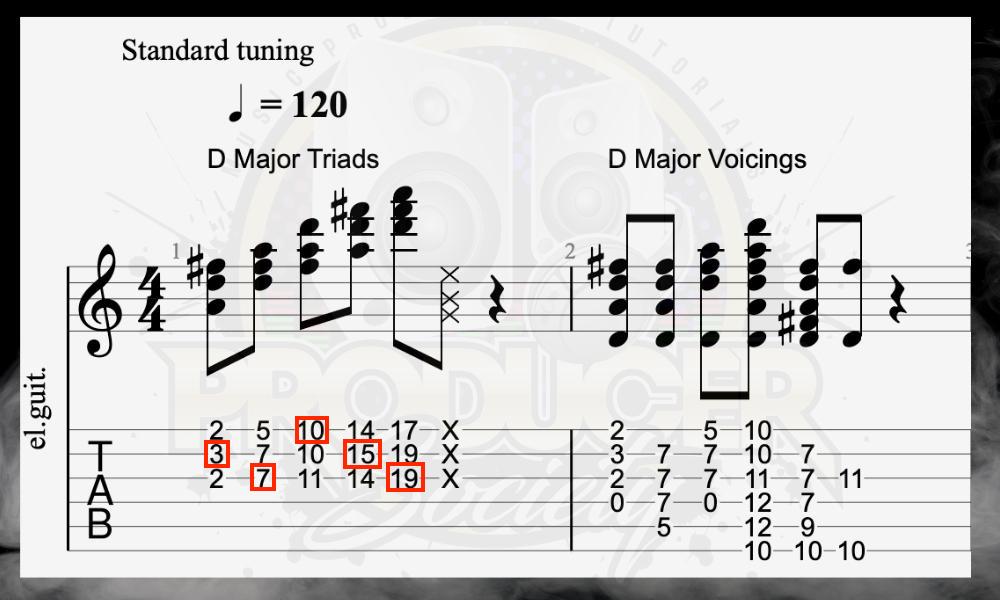
The first D Major on the right underneath D Major Voicings is the one that’s most commonly used.
How to Play D Major on the Guitar
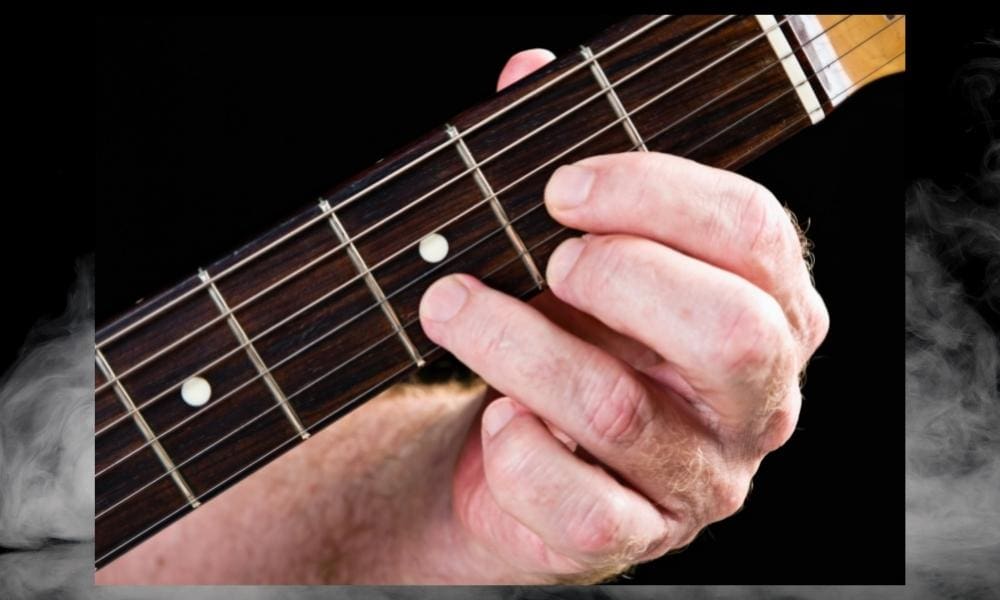
Chord Diagram for D Major on Guitar
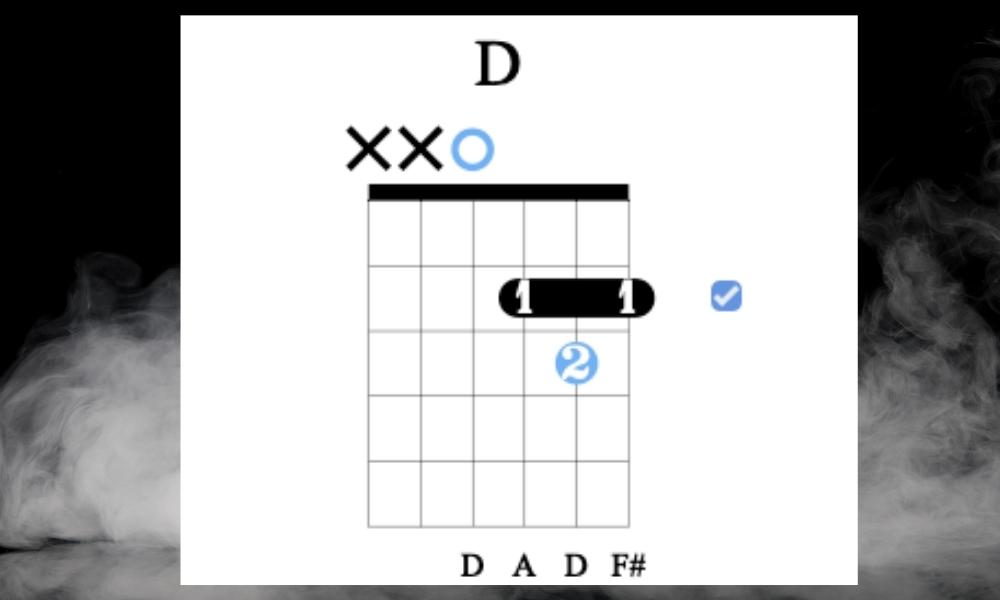
G Major
2) ii – V – I (D Minor, G Major [G7], C Major)
There are quite a few “standard” chord progressions out there, but if there was another one that’s comparable to I-IV-V in terms of importance to music, it would be the ii-V-I.
In simple terms, the ii-V-I chord progression is the 2nd, the 5th, and the 1st chord of a major scale. It can also be used as a minor chord progression as well, ie, ii – v – i, but the first variation is a lot more common.
If you want more information on this chord progression, I would check out the Jens Larsen video that I shared above. Additionally, I would take a look at his entire playlist which really dives into it in detail.
The Importance of Triads on Guitar (And in Theory)
![Why Are Triads So Important To Learn On Guitar [ANSWERED] - Featured Image](https://travelingguitarist.com/wp-content/uploads/2022/02/Why-Are-Triads-So-Important-To-Learn-On-Guitar-ANSWERED-Featured-Image-.jpg)
Now, just because the bulk of popular songs is made up of these three simple chords, doesn’t mean that you’re predestined to writing boring music that sounds the same.
You can unlock an entirely new dimension of chord voicings, harmonies, and lead arpeggios by understanding triads. That is, major and minor chords are made up of three notes which can be inverted, extended, and played all across the guitar.
Major and minor triads are the foundation of Western music. The next phase of your learning journey is appreciating that every major and minor chord is essentially just three notes which can be played in any order, anywhere on the neck of the guitar.
Having a real thorough knowledge of the various triads across the neck of the guitar will help you unlock chord tone soloing and many other things which I’ve written a guide on here.
Essentially, you’ll come to understand which are the best notes to play over which chords because you understand the chord construction and triads all along the neck.
Another benefit of doing this is that it helps you memorize the notes of the fretboard in a very useful, applicable, and non-annoying way. This is another reason why I shared the triads in the previous images shown earlier in the article.
Important Things to Note About the 3 Main Chords on Guitar
1) A Chord Progression Cannot Be Patented
You might have finished reading this article, and gotten a little worked up. Perhaps thinking, “How will I ever create something unique?”
Although the I-IV-V is an eternally tried and tested progression, it’s important to note that there still exists countless scope for uniqueness and experimentation in music. Whether that be through rhythm, inversions, or tension. You can still create a unique song.
This is especially promising in the context of this study which shows that the brain processes the lyrics and melody of a song in different areas. What does this mean? Songs still sound different to listeners, just by having different lyrics and melodies.
Gear Mentioned
1) Punkademic Comprehensive Music Theory Complete
2) Punkademic’s All-Access Pass
3) JamPlay

 Written By :
Written By :